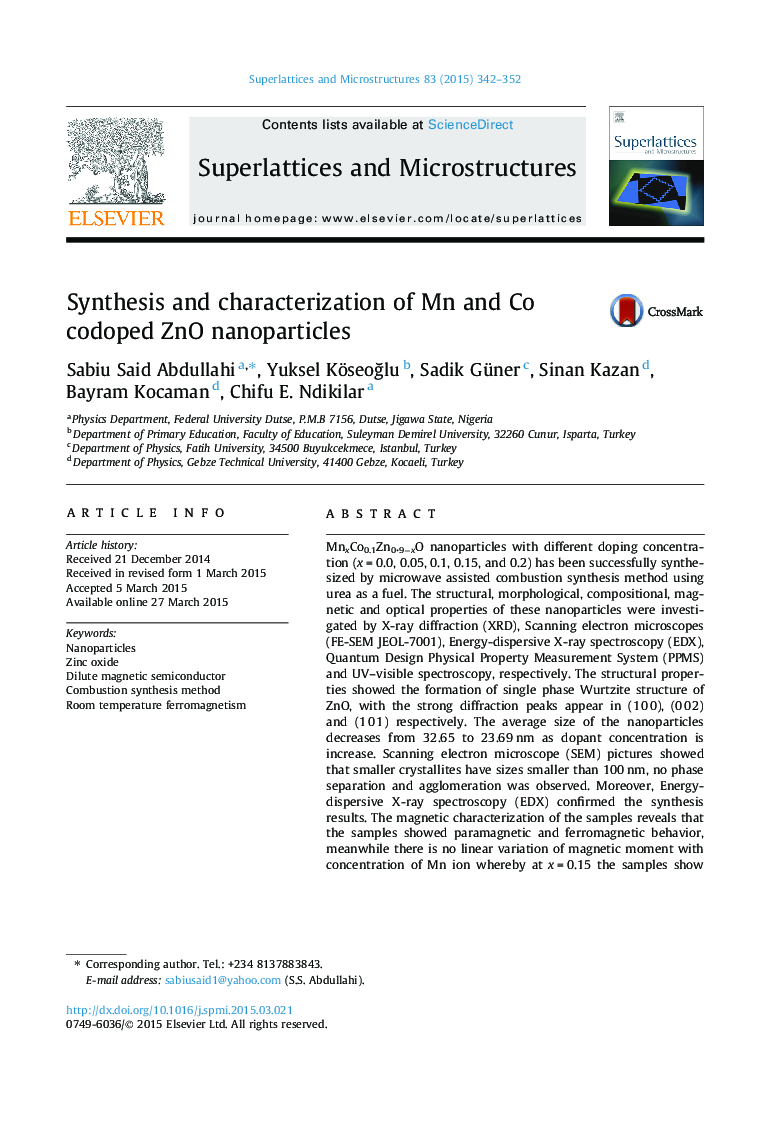| Article ID | Journal | Published Year | Pages | File Type |
|---|---|---|---|---|
| 1553132 | Superlattices and Microstructures | 2015 | 11 Pages |
•We observe 1–20% of Mn can substitute Zn2+ in Mn and Co codoped ZnO nanoparticles without secondary phase.•Room temperature ferromagnetic behavior was observed up to 15% of Mn doping in the samples.•The band gap of the Mn and Co codoped ZnO nanoparticles decrease by an increase in the dopant concentration.
MnxCo0.1Zn0.9−xO nanoparticles with different doping concentration (x = 0.0, 0.05, 0.1, 0.15, and 0.2) has been successfully synthesized by microwave assisted combustion synthesis method using urea as a fuel. The structural, morphological, compositional, magnetic and optical properties of these nanoparticles were investigated by X-ray diffraction (XRD), Scanning electron microscopes (FE-SEM JEOL-7001), Energy-dispersive X-ray spectroscopy (EDX), Quantum Design Physical Property Measurement System (PPMS) and UV–visible spectroscopy, respectively. The structural properties showed the formation of single phase Wurtzite structure of ZnO, with the strong diffraction peaks appear in (1 0 0), (0 0 2) and (1 0 1) respectively. The average size of the nanoparticles decreases from 32.65 to 23.69 nm as dopant concentration is increase. Scanning electron microscope (SEM) pictures showed that smaller crystallites have sizes smaller than 100 nm, no phase separation and agglomeration was observed. Moreover, Energy-dispersive X-ray spectroscopy (EDX) confirmed the synthesis results. The magnetic characterization of the samples reveals that the samples showed paramagnetic and ferromagnetic behavior, meanwhile there is no linear variation of magnetic moment with concentration of Mn ion whereby at x = 0.15 the samples show room temperature ferromagnetic behavior with coercive field and remanent magnetization of 47.70 Oe and 1.8 × 10−1 emu/g, respectively. UV–vis spectroscopy results show that the optical band gap of the nanoparticles varies between 3.24 eV and 3.02 eV.
